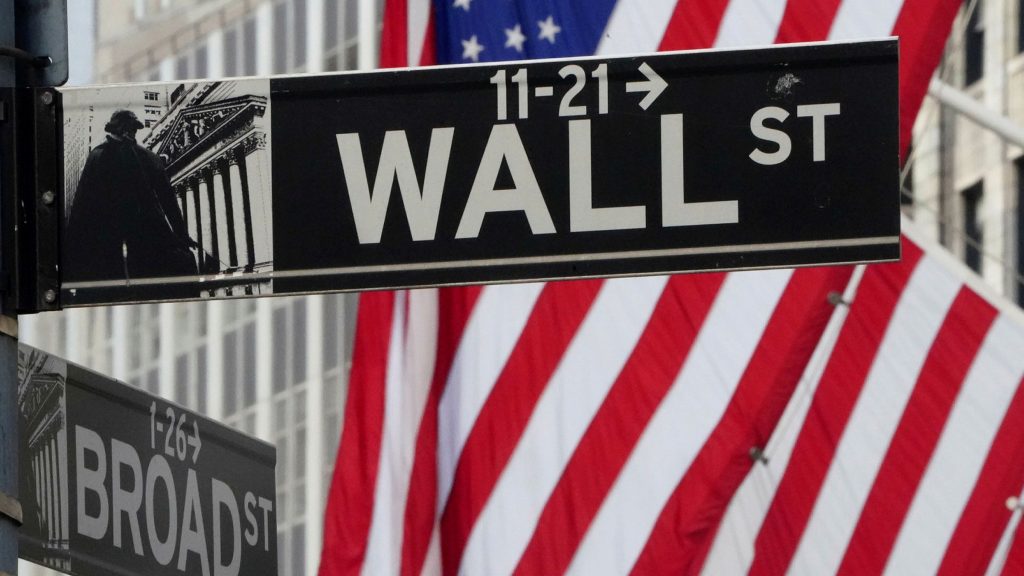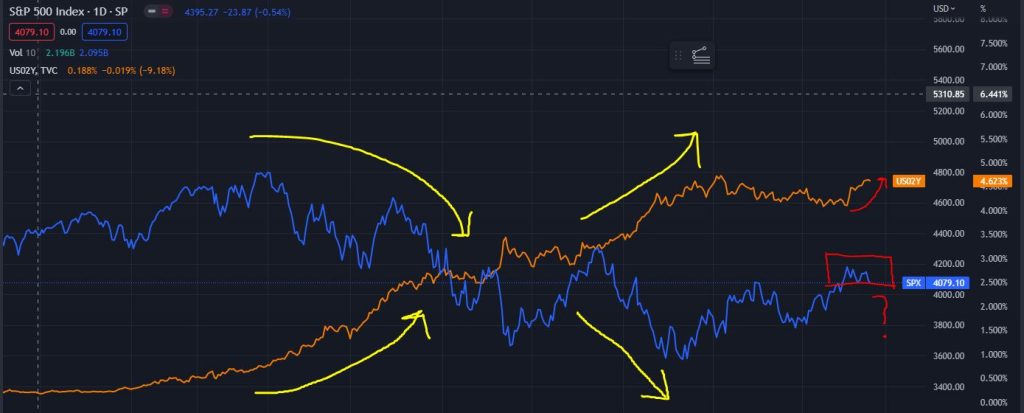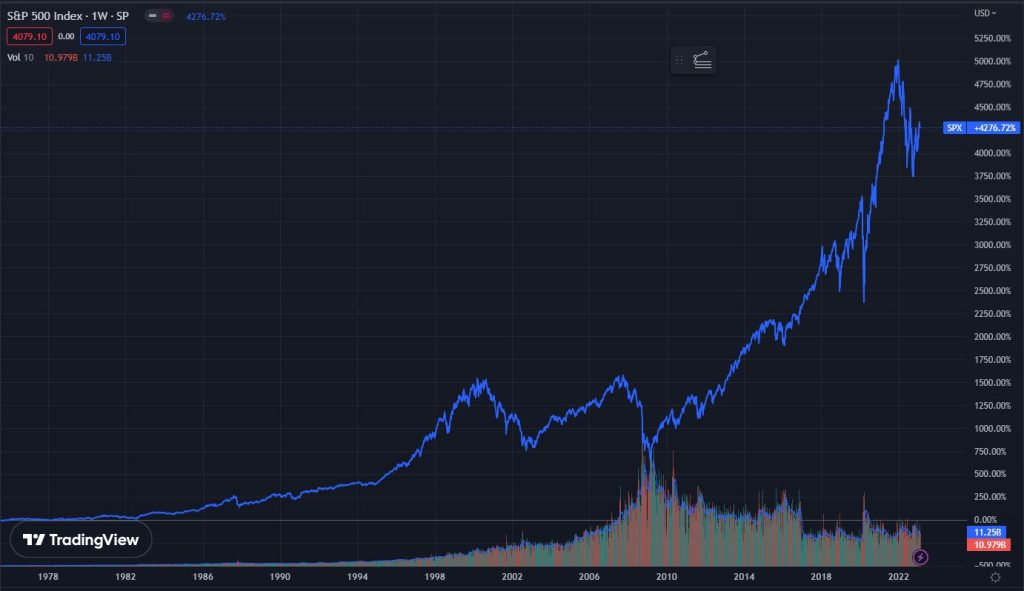
Where is the US Stock Market going from here?
Where is the US stock market headed? This is a question that has been occupying my thoughts over the past week. Despite holding above its October 13, 2022 lows and showing an upward trend of roughly 17%, the market’s future trajectory remains uncertain. There are a multitude of factors at play that contribute to this ambiguity.
Where is the US Stock Market going from here? Using the US 2 Year Treasury Bond Yields to Predict the Market Direction
Over the past few months, I have been relying on the US 2-year bond yield as a predictor of the stock market’s direction. Historically, an increase in the 2-year bond yield has often resulted in a decline in the stock market, and conversely, a decrease in the yield has typically coincided with a rise in the market.

What cause the Relationship between the 2Y Bond and the US Stock Market ?
What is the US 2 Year Bond Yield?
The 2-year bond yield is a critical indicator of short-term interest rates, reflecting the yield the US government will pay on a two-year US Treasury bond. As such, it is closely monitored by investors, providing insights into the direction of monetary policy set by the Federal Reserve.
When the 2-year bond yield rises, as indicated by the yellow arrow in the graph above, it can signal an imminent increase in interest rates by the Federal Reserve. Consequently, investors often shift their focus from stocks to bonds, with higher interest rates rendering bonds more appealing.
Currently, the 2-year bond yield stands at 4.62%. This implies that investors can earn 4.62% risk-free return on their capital investment, making equities a relatively less attractive option, as equity investments entail risk. Therefore, investors would need an investment that provides more than the 4.62% yield that 2-year bonds offer to consider taking the additional risk associated with equities. Investing in stocks expected to yield a return of 4.62% (with risk) is unlikely to entice investors, compared to investing in 2-year bonds, which guarantee a risk-free 4.62% return.
As a result, the demand for stocks would decrease, and the stock market would experience a decline. To entice investors to undertake risky equity investments, investors must be offered a certain “spread” (i.e., 4.62% + X). For further insights, readers may explore the Capital Asset Pricing Model (CAPM), although note that it can become highly technical
What’s Next?
From the chart presented above, it appears that the US 2-year bond yield has gradually risen once again, reaching a peak of 4.62% as investors predict a more hawkish Federal Reserve.
Over the past two years, the inverse correlation between the stock market and 2-year treasuries has held true (higher rates = weaker stock market). However, it is interesting that the US stock market has not declined significantly and appears to be moving sideways within a channel.
Assuming the relationship continues, this means that either 1) the stock market is incorrect or 2) the bond market is incorrect. Based on historical trends, the bond market typically predicts the direction more accurately.
While the bond market may once again be correct (resulting in a decline in the stock market), as a long-term investor, I am not worried by these market movements as I believe the market will eventually rebound in the long run. Instead, I welcome market corrections and will invest more cash to increase my exposure to my favorite stocks. I have discussed one of my favorite stocks here.
The relationship I have observed between the US 2-year bonds and the US stock market serves as a rationalization for me on what drives equity prices within the stock market. As an inquisitive person, I require a reason for every action, and this relationship serves as an answer for me.
One might wonder why, given the strength of the relationship between the US 2-year bond yield and the stock market, I don’t attempt to time the market. However, I choose not to time the market as I acknowledge that I can never predict the stock market’s direction with absolute certainty. In the event that I make a wrong prediction even once, I may miss out on a multi-year bull market, which could have a substantial impact on my portfolio returns. Therefore, as a long-term investor, I prefer to stay invested in the market and remain patient, while keeping an eye on market trends and making strategic investment decisions accordingly.
I do not know what the stock market will do tomorrow, next week or one year from now. However, one thing I can predict with 100% certainty – the stock market always goes up.

A picture speaks a thousand words. The stock marker ALWAYS goes up. Always invest for a better future!
I hope that you have learnt something new in this article!
DISCLAIMER: The following writeup is for informational purposes only and should not be construed as a recommendation to buy, sell, or hold any securities. Investing in stocks involves risks, and past performance is not indicative of future results. The author and any related parties do not guarantee the accuracy or completeness of the information provided and shall not be held liable for any investment decisions based on the information presented. It is important to conduct your own research and seek professional advice before making any investment decisions.